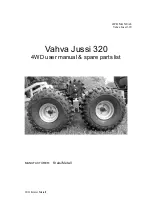
31
Exercise C - Draining Effect of a Tile Line
Objective
Tile lines, horizontal galleries, trenches and, sometimes, vertical wells are widely
used to control seepage of water through permeable soils. This type of control differs
in principle from control achieved by sheet pile walls. Sheet pile walls control by
elongating the flow lines so as to reduce the hydraulic gradient and, hence, the
seepage. Now we want to control by changing the location of the ending, or outlet
sections of the flow lines. This can only be done at the expense of an increase in
hydraulic gradient and thus also the seepage rate. The reason for this is simple and
follows from Darcy's Law.
As we already know, water penetrates through soil along paths of highest hydraulic
gradient. Therefore, if we want to change the position of the end sections of flow lines
we must arrange new paths that have greater gradient than the original ones.
The gradient increase is most easily achieved by (a) removing part of the soil (ie. the
medium obstructing the water movement) and/or (b) by making the head difference
between an upper pool and the desired end-points of flow lines greater than the
original. A tile line, a trench, or a well accomplishes the first effect automatically. The
second is achieved only by maintaining a tail water level at a lower elevation than the
original tail water. This is usually done by pumping or by draining.
Tile lines, galleries, trenches and the like are used to drain water from surface layers
of swamps, and from damp agricultural land; to protect excavation sites from flooding
by ground water, to collect water supplies from water bearing strata.
The objective of this experiment is to show, by visualising the flow lines, how a tile
line works (ie. how it forces the end-sections of flow lines to concentrate on one
point).
Equipment Set Up
Purpose made tile drains can be inserted in any of six locations in the aluminium side
of the permeability tank. Two tile drains are normally used in this experiment.
The drains are fitted into the tank at two of the six positions. Space around the
overflows is kept free by using vertical sheets of perforated metal, which can be
supported by the overflow pipes.














































